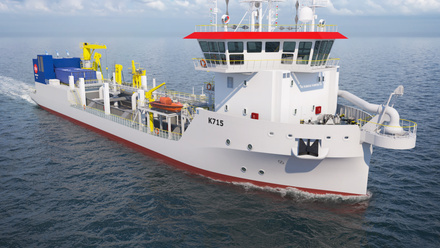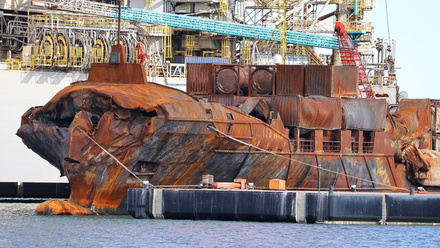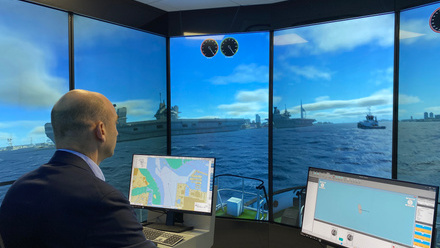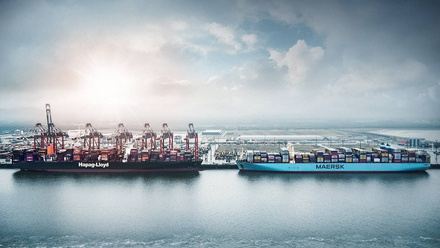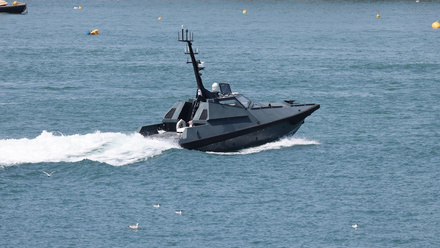A future maritime communication system
Ultra-fast and secure data transmission is an essential enabler for maritime digitalisation, creating visibility on emission levels and vessel performance.
In the foreseeable future, ships will need to maintain continuous high-speed, low latency internet access to a standard equivalent as that enjoyed on land. But what is a Future Maritime Mobile Communications System (FMMCS), usually used in railways (FRMCS), and where are the challenges to adoption for the maritime industry?
Significant strides have been made in maritime communications in the past few decades, most notably the near universal utilisation of geostationary satellite services sweeping away the trusty morse code.
The converse of progress is technological obsolescence. While there is no doubt geostationary satellites deliver highly satisfactory assistance to shipping, in comparison to powerful fifth generation (5G) mobile networks and low-Earth orbit (LEO) satellites (for example, Starlink), the technology is bandwidth limited and inherently cannot deliver the low latency required to optimise the end-to-end data encryption essential to cyber-risk control (it is ideally 100ms or less; geostationary satellites cannot be less than 500ms).
It is therefore these twin ambitions – achieving digitalisation while recognising the shortcomings of existing maritime communications technology – that defines a FMMCS.
At the heart of a FMMCS is dynamic adaptive routing (DAR). Simply, a 'DAR Box' onboard the ship would seamlessly connect to the most suitable available network, be it 5G or LEO, as a function of performance and cost – who provides the network is quite irrelevant. Indeed, many vessels are already operating in this manner (so called hybrid working), albeit based on proprietary control systems.
Standardisation and organisation
Digitalisation calls for harmonisation. This, in turn, requires a tightly structured global standardisation process to supply the crucial core elements of maritime communications: the necessary radio spectrum, marinised equipment supply, process of type approval, and so forth.
Given the international nature of shipping, it is for the IMO to establish the strategic direction for a FMMCS, including the overarching requirements to be fulfilled (such as fully effective cyber risk control). However, it is questionable whether the IMO has the necessary skill base to fully deliver the comprehensive framework of standards that would be required for a FMMCS, notwithstanding the NGOs [non-governmental organisation] within who serve as technical advisers.
This is not a criticism, but non-aligned industry bodies may be better suited to the task. For example, the International Union of Railways (UIC) has engaged with the 3rd Generation Partnership Project (3GPP) – a body which unites seven telecommunications standard development organisations – such that 3GPP standards will be at the core of future mobile communications for trains with only minor 'tweaks' to address the specific issues associated with railway operations.
Yet, acceptance that shipping can no longer plough a solitary furrow in matters ship-to-shore communications will not come easily. This goes beyond the practicality of managing the phase out of existing technology. Rather, will the entities involved in the oversight of – and dependent on – the present regulatory framework be prepared to fall on their collective swords?
Not that maintenance of the status quo is an option. To paraphrase King Canute, ultimately no entity has control over the incoming tide of technology.
As indicated above, 5G and LEO are increasingly being used at sea no matter what SOLAS [Convention for the Safety of Life at Sea] Chapter IV and the International Radio Regulations (RR) may say. In time, this can only reduce the commercial viability of geostationary satellite operations. Any delay in accepting and effectively managing reality places the whole future of maritime digitalisation – and effective, modern communication – at risk.
The views expressed in this article are those of the author and do not reflect the official stance of the Institute.
Tell us what you think about this article by joining the discussion on IMarEST Connect.
Image: communications satellite in geostationary orbit; credit: Shutterstock.


